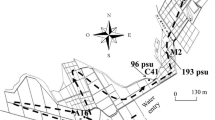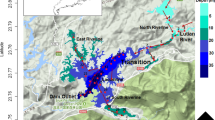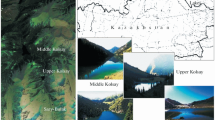Abstract
Changes in the population structure of Salpa thompsoni from austral mid-summer to autumn off the Adelie Coast, Antarctica, were examined using cluster analysis based on reproductive states. S. thompsoni was the dominant macrozooplankton species through the research periods although the abundance decreased markedly in autumn. In both summer and autumn we identified three geographically coherent subpopulations, which were considered to be either a mating swarm or physical aggregation. Many aggregate forms with an empty (dead) embryo were observed, and the ratio of newborn solitary forms decreased in autumn, indicating sexual reproduction of the salps was deactivated. The significant reduction in size of mature solitaries suggested that the capacity of asexual reproduction was also reduced in autumn. In addition to water temperature decline, the phytoplankton shortage (which was partly caused by high grazing pressure of S. thompsoni during summer) might be the factor causing decline in their own population size in autumn.
Similar content being viewed by others
Author information
Authors and Affiliations
Additional information
Accepted: 25 May 1999
Rights and permissions
About this article
Cite this article
Chiba, S., Ishimaru, T., Hosie, G. et al. Population structure change of Salpa thompsoni from austral mid-summer to autumn. Polar Biol 22, 341–349 (1999). https://doi.org/10.1007/s003000050427
Issue Date:
DOI: https://doi.org/10.1007/s003000050427




